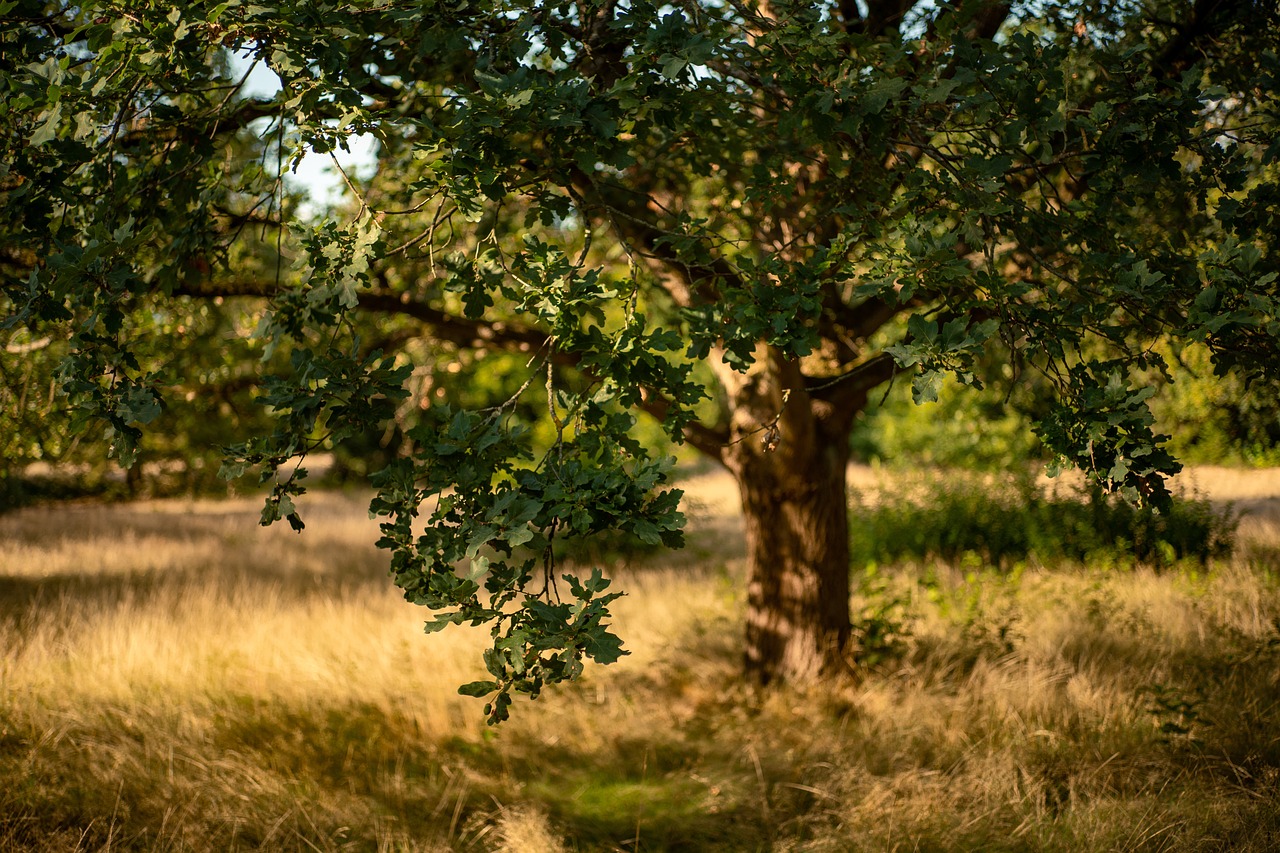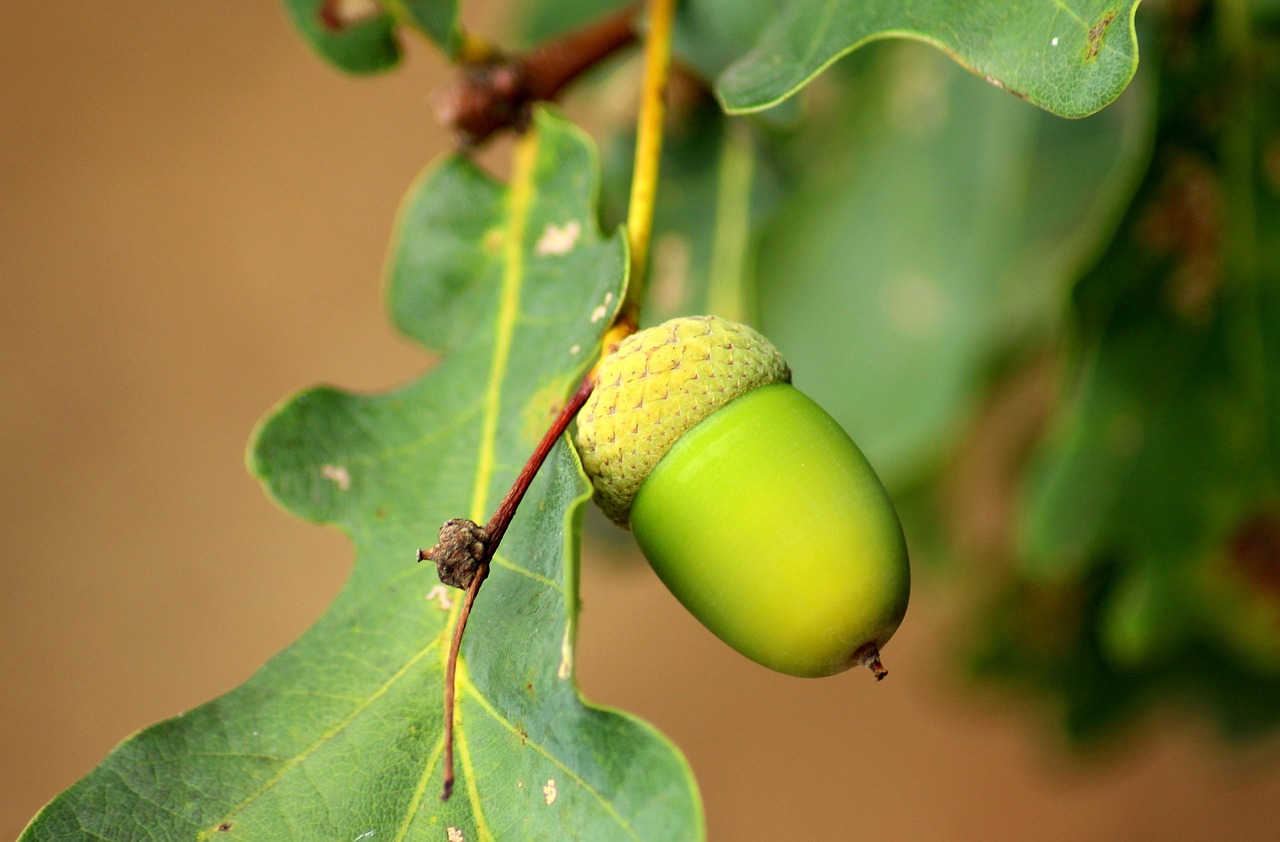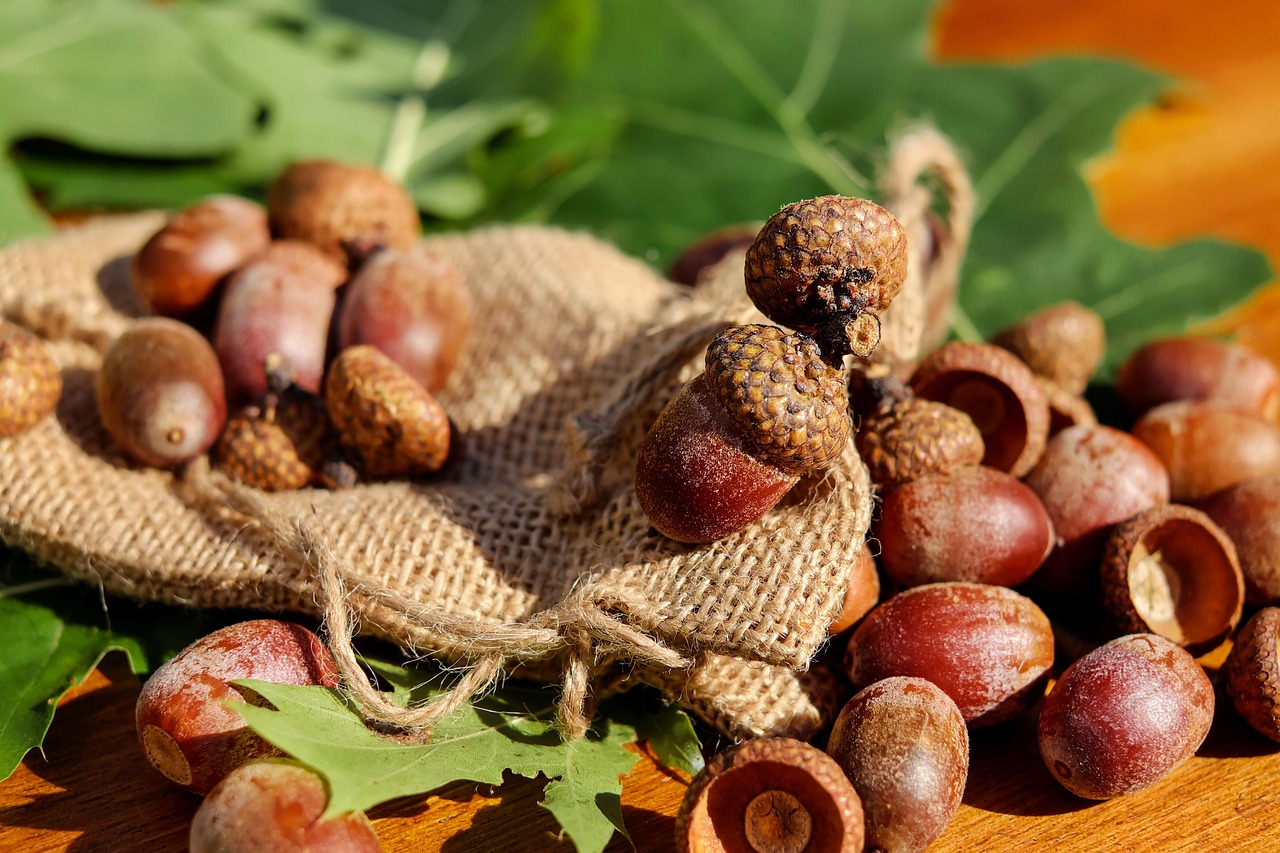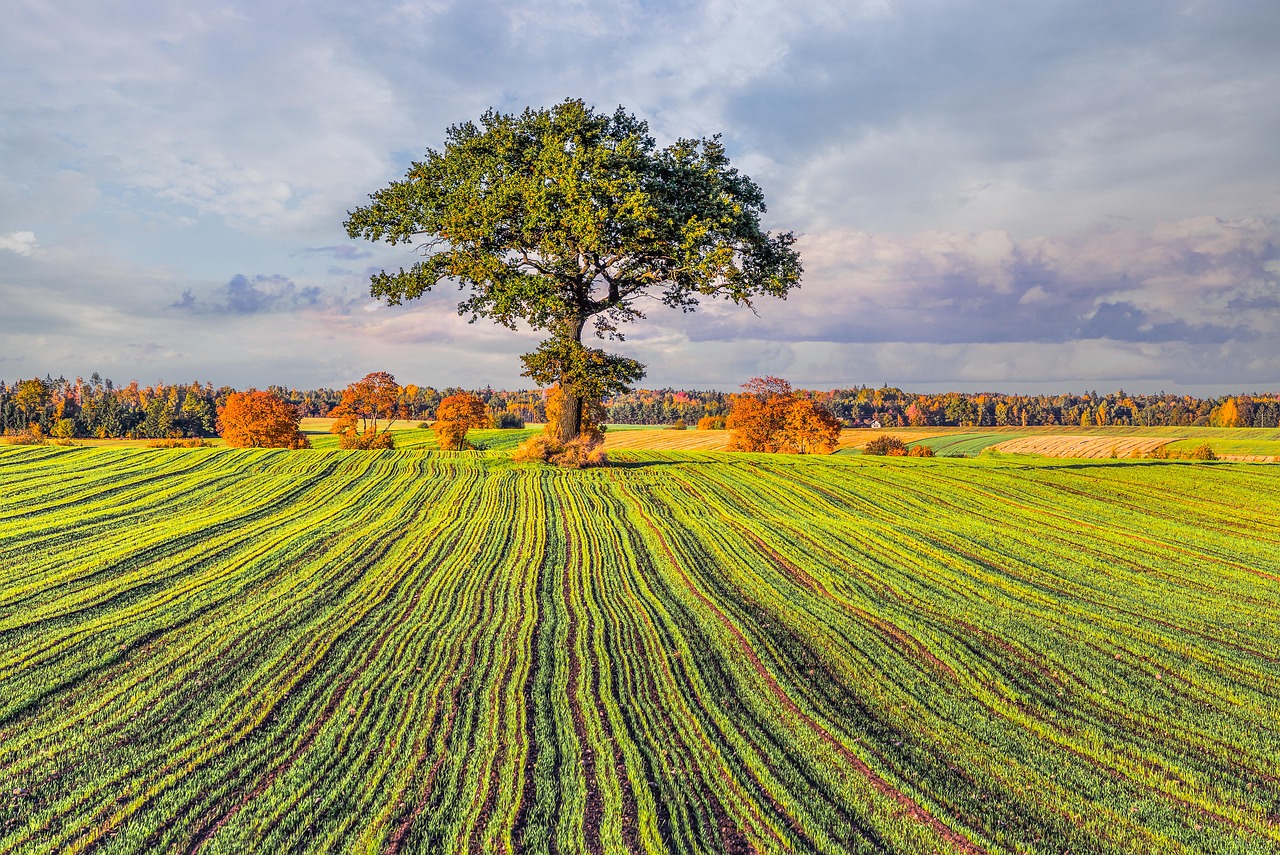Pruning young oak trees is essential for their future strength. Proper pruning helps establish a strong structure, promotes healthy growth, and reduces the risk of disease. It is crucial to understand the right techniques and timing to ensure the best results.
Young oak trees, like many other tree species, require careful attention during their formative years. Pruning not only shapes the tree but also enhances its longevity and overall health. Oak trees are known for their impressive stature and strength, making them a valuable addition to any landscape. However, without proper care, they can develop structural weaknesses that may lead to problems later in life.

Pruning serves multiple purposes. It removes dead or diseased branches, encourages healthier growth, and helps create a balanced canopy. A well-pruned oak tree is less likely to suffer from wind damage and other environmental stresses. Additionally, pruning can improve air circulation and light penetration, both of which are vital for the tree’s health.
The Importance of Pruning Young Oak Trees
Understanding the importance of pruning young oak trees can empower homeowners and gardeners to take better care of these majestic plants. Here are some key reasons why pruning is critical:
- Strengthening Structure: Pruning helps develop a sturdy framework by removing weak branches and allowing stronger ones to thrive.
- Encouraging Healthy Growth: By cutting back certain branches, the tree can direct energy towards new growth instead of maintaining less productive limbs.
- Reducing Disease Risk: Removing dead or infected branches helps prevent the spread of disease throughout the tree.
- Enhancing Aesthetics: A well-pruned tree looks more attractive and can add value to your property.
The timing of pruning is equally important. Young oak trees are best pruned during their dormant season, typically late winter to early spring before new growth begins. This timing minimizes stress on the tree and reduces the risk of sap loss. Additionally, pruning during dormancy can help ensure faster healing when the tree begins to grow again.

To effectively prune a young oak tree, it is essential to follow specific steps that promote optimal growth and health:
- Assess the Tree: Before making any cuts, evaluate the overall shape and health of the tree. Identify any dead or diseased branches that need removal.
- Remove Competing Leaders: If multiple stems are competing for dominance, choose the strongest one to keep and remove the others.
- Thin Out Crowded Branches: Remove branches that are crossing or growing too close together to improve air circulation.
- Make Clean Cuts: Use sharp, clean tools to make precise cuts at a slight angle. This helps prevent damage to the tree and promotes faster healing.
Maintaining good pruning practices is vital for ensuring the long-term health of oak trees. Proper equipment is equally essential. Using sharp pruning shears or saws will make cleaner cuts and reduce stress on the tree. Always remember to disinfect tools between cuts, especially when dealing with diseased branches, to prevent spreading pathogens.
Common Mistakes in Oak Tree Pruning
Even experienced gardeners can make mistakes when pruning oak trees. Being aware of these common pitfalls can help ensure successful outcomes:

- Over-pruning: Removing too much foliage can shock the tree and hinder its growth.
- Poor Timing: Pruning during active growth can lead to excessive sap loss and increased vulnerability.
- Neglecting Disease Signs: Failing to remove diseased branches can compromise the entire tree’s health.
By avoiding these common mistakes and following proper techniques, you can help your young oak tree develop into a strong, resilient specimen. Remember that patience is key; trees take time to recover and grow stronger after pruning.
As your oak tree matures, continue to monitor its growth and adjust your pruning strategies accordingly. Regular maintenance not only enhances its strength but also ensures its beauty in your landscape for years to come.
Understanding Oak Tree Growth Stages
To effectively prune a young oak tree, it is crucial to understand its growth stages. Oaks typically progress through several phases, each requiring different care and pruning techniques. Recognizing these stages will help you make informed decisions to support the tree’s development.

Seedling Stage
The seedling stage occurs shortly after germination. During this period, the focus should be on establishing strong roots and a healthy stem. Pruning during this stage is minimal and primarily involves:
- Removing Weak Seedlings: Select the healthiest seedlings to ensure the best chance of survival.
- Ensuring Adequate Space: Thin out overcrowded seedlings to prevent competition for nutrients and sunlight.
Juvenile Stage
As the oak grows into the juvenile stage, it begins developing its first branches. This is an important time for formative pruning. The goals during this stage include:
- Establishing a Strong Leader: Choose a central leader branch to promote upward growth.
- Encouraging Lateral Branch Growth: Select a few strong lateral branches to create a balanced structure.
- Removing Competing Branches: Eliminate any branches that compete with the main leader.
Proper pruning during the juvenile stage sets the foundation for a strong tree structure. This is when you can begin shaping the oak for future growth.
Pruning Techniques for Young Oaks
Several techniques can be employed when pruning young oak trees. Understanding these methods will allow you to make precise cuts that promote health and growth.
Thinning Cuts
Thinning cuts involve removing entire branches at their point of origin. This technique opens up the canopy and improves air circulation and light penetration. Thinning cuts are often used to:
- Reduce Crowding: Remove branches that are too close together.
- Enhance Structure: Allow for better spacing between remaining branches.
Heading Cuts
Heading cuts reduce the length of a branch by cutting it back to a bud or lateral branch. This technique encourages bushier growth and is useful for:
- Controlling Size: Limit the height of a young oak.
- Encouraging New Growth: Promote the development of new shoots from the remaining buds.
Tools for Pruning Young Oak Trees
Using the right tools is essential for effective pruning. Here are some common tools that every gardener should have:
| Tool | Description | Use |
|---|---|---|
| Pruning Shears | Hand-held scissors designed for cutting small branches. | Ideal for making precise cuts on branches up to ¾ inch thick. |
| Loppers | A large pair of scissors with long handles. | Used for cutting thicker branches, usually up to 2 inches in diameter. |
| Saw | A tool with a serrated blade for cutting larger branches. | Effective for branches thicker than 2 inches. |
| Safety Gear | Gloves and goggles to protect from injury. | Always wear safety gear while pruning to prevent accidents. |
Having the right tools will make the pruning process efficient and ensure clean cuts, which promote faster healing for the tree.
Mistakes to Avoid During Pruning
Avoiding common mistakes can significantly improve your pruning results. Here are several pitfalls to watch out for:
- Ignoring Tree Health: Always assess the health of the tree before pruning. If it shows signs of stress or disease, consult an expert before proceeding.
- Improper Cutting Techniques: Make sure to cut at the right angles and locations to avoid damaging the tree.
- Failure to Monitor Growth: After pruning, keep an eye on how the tree responds and adjust future pruning accordingly.
By being mindful of these mistakes and employing effective pruning techniques, you can foster a healthy environment for your young oak tree to thrive as it matures.
The Role of Mulching and Fertilization
Apart from pruning, proper mulching and fertilization play vital roles in the health of young oak trees. These practices complement pruning efforts by enhancing nutrient availability and reducing competition from weeds.
Mulching Benefits
Applying mulch around the base of an oak tree offers several benefits:
- Moisture Retention: Mulch helps retain soil moisture, which is crucial for young trees.
- Weed Control: A layer of mulch suppresses weed growth that competes for nutrients.
- Temperature Regulation: Mulch insulates the soil, protecting roots from extreme temperatures.
Fertilization Tips
If your soil lacks essential nutrients, consider fertilizing your oak tree. Here are some tips:
- Select Appropriate Fertilizer: Use a balanced fertilizer with equal parts nitrogen, phosphorus, and potassium.
- Avoid Over-Fertilizing: Too much fertilizer can harm young trees; follow recommended application rates.
Taking these additional steps will support your young oak’s overall health, complementing your pruning efforts effectively.
Seasonal Considerations for Pruning Young Oak Trees
Understanding the seasonal aspects of pruning is essential for maximizing the health and strength of young oak trees. Each season presents unique opportunities and challenges for tree care. Knowing when to prune and how to adapt your strategies based on the time of year will benefit your oak tree significantly.
Spring Pruning
Spring is often considered the ideal time for pruning young oak trees, especially just before new growth begins. This timing allows the tree to heal quickly and encourages robust growth in the warmer months. Here are important considerations for spring pruning:
- Assess Structure: Inspect the tree’s structure as buds start to swell. Look for any weak or crowded branches that need attention.
- Remove Dead Wood: Spring is a great time to remove any dead or damaged branches. This helps promote healthy growth.
- Limit Major Cuts: Avoid heavy pruning during this time, as excessive cuts can stress the tree.
Summer Pruning
While summer pruning is generally not recommended, it can be beneficial in certain situations. If you notice excessive growth or structural issues after spring, consider these tips:
- Focus on Maintenance: Lightly prune to maintain shape and remove any problematic branches.
- Avoid Major Cuts: Heavy pruning can lead to sunburn on exposed branches, which may cause further damage.
- Monitor Growth: Keep an eye on growth patterns to ensure the tree is developing properly.
Fall Pruning
Fall is another critical time for oak tree care. However, the approach differs from spring pruning. Here’s what to consider:
- Avoid Pruning Late: If temperatures are dropping significantly, it is best to avoid heavy pruning as it can stress the tree before winter.
- Prepare for Winter: Light pruning can help prepare the tree for winter by removing weak or damaged branches.
- Inspect for Pests: Fall is a good time to check for any signs of pests or diseases that could harm the tree over winter.
Pest and Disease Management in Young Oak Trees
Young oak trees can face various pests and diseases that threaten their health and strength. Being aware of common issues and how to manage them is vital for maintaining your oak’s well-being.
Common Pests
Several pests are known to affect young oak trees. Here are a few common ones:
- Oak Leaf Gall Midge: These tiny flies cause galls on oak leaves, leading to distortion. Monitor for signs and consider treatment options if necessary.
- Aphids: Aphids produce honeydew, which can lead to sooty mold. They can also weaken the tree by sucking sap.
- Spider Mites: These pests can cause leaf discoloration and may lead to leaf drop if not controlled.
Disease Issues
Diseases can also pose significant threats to young oaks. Common diseases include:
- Powdery Mildew: This fungal disease appears as a white powdery substance on leaves. Improving air circulation can help prevent it.
- Crown Gall: A bacterial infection that causes galls on roots and stems, weakening the plant. Remove infected areas promptly.
- Oak Wilt: A serious fungal disease that disrupts water transport in trees. Monitor symptoms closely and consult an expert if suspected.
Pruning Techniques for Healthier Trees
In addition to seasonal considerations, employing specific techniques during pruning can enhance the health of young oak trees. Here are some effective methods:
Crown Reduction
Crown reduction involves selectively removing branches to decrease the overall size of the tree’s canopy. This technique can be especially useful for young oaks that have become too large for their space. Key points include:
- Choose Strategically: Focus on reducing height while maintaining a balanced shape.
- Avoid Topping: Topping is harmful and should be avoided as it can lead to weak regrowth.
Training Young Oaks
Training young oaks involves shaping them as they grow to establish a strong framework. This process includes:
- Selecting a Leader: Choose one strong branch as the leader and prune competing branches.
- Encouraging Lateral Growth: Allow for lateral branches to grow evenly around the trunk, creating a well-structured canopy.
The Role of Community Resources
Caring for young oak trees can be enhanced by utilizing community resources. Local gardening clubs, extension services, and arborists offer valuable information and support. Consider these options:
- Local Extension Services: Many universities offer resources and advice tailored to specific regions, including pest management and soil testing.
- Community Workshops: Attend workshops focused on tree care to learn from experts and meet fellow gardening enthusiasts.
- Consulting Arborists: Professional arborists can provide personalized assessments and recommendations for your young oak trees.
Engaging with community resources not only improves your knowledge but also fosters a network of support for healthy tree care practices.
Long-Term Care for Young Oak Trees
In addition to pruning and seasonal care, long-term care practices are essential for ensuring the health and strength of young oak trees. These practices encompass a wide range of activities that contribute to the overall vitality of the tree as it matures.
Watering Practices
Proper watering is vital for young oak trees, especially during their first few years. Here are some effective watering strategies:
- Establish a Deep Watering Routine: Water deeply and less frequently to encourage deep root growth. This helps trees withstand drought conditions.
- Monitor Soil Moisture: Check the soil’s moisture levels regularly. Ensure the top few inches of soil dry out before watering again.
- Consider Irrigation Systems: For larger planting areas, consider installing drip irrigation systems for consistent moisture without over-watering.
Soil Management
Healthy soil is the foundation for strong oak trees. Implement these soil management strategies:
- Regular Testing: Conduct soil tests to check nutrient levels and pH balance. Amend the soil as needed to meet the tree’s requirements.
- Organic Matter Addition: Incorporate organic matter such as compost to improve soil structure, drainage, and nutrient content.
- Avoid Compaction: Minimize foot traffic around the tree to prevent soil compaction, which can restrict root growth.
Mulching for Long-Term Health
As mentioned earlier, mulching offers numerous benefits. To maintain its effectiveness over time, consider these points:
- Maintain Mulch Depth: Keep a 2-4 inch layer of mulch around the base of the tree to retain moisture and suppress weeds.
- Refresh Mulch Annually: Replace or refresh mulch every year to prevent decomposition and maintain its benefits.
- Avoid Mulch Volcanoes: Ensure that mulch is not piled against the trunk. This can lead to rot and other issues.
Environmental Considerations
The environment plays a significant role in the care of young oak trees. Understanding local conditions can help you make better decisions regarding pruning and overall tree care. Here are some environmental factors to keep in mind:
Climate and Weather Patterns
Your local climate affects how you care for your oak trees. Consider the following:
- Drought Conditions: In areas prone to drought, increase watering frequency during dry spells to ensure adequate moisture.
- Frost Dates: Know your region’s last frost date in spring and first frost date in fall. This information helps plan your pruning schedule.
Pest and Disease Pressure
Your geographical location may also influence pest and disease prevalence. Be aware of local issues, including:
- Endemic Pests: Research common pests in your area and monitor your oak trees for early signs of infestation.
- Disease Outbreaks: Stay informed about any outbreaks that could affect oak trees in your region and take preventive measures when necessary.
Community Involvement and Education
Participating in community programs can enhance your knowledge and provide additional resources for caring for your oak trees. Consider getting involved in local initiatives, such as:
- Tree Planting Events: Join local organizations that focus on planting trees in parks or community spaces. This experience can deepen your understanding of tree care.
- Volunteer Programs: Offer your time to arboretums or botanical gardens to learn from professionals about tree maintenance.
- Online Forums and Social Media Groups: Engage with others who share your passion for gardening and tree care through online communities.
Conclusion
Caring for young oak trees through proper pruning, seasonal considerations, and long-term management practices is crucial for their strength and longevity. By understanding the growth stages, employing effective pruning techniques, and addressing environmental factors, you can ensure that your oak trees develop into resilient specimens. Additionally, utilizing community resources enhances your knowledge and support network, providing valuable insights into tree care practices. With dedication and patience, your young oak trees will flourish, contributing beauty and strength to your landscape for generations to come.
